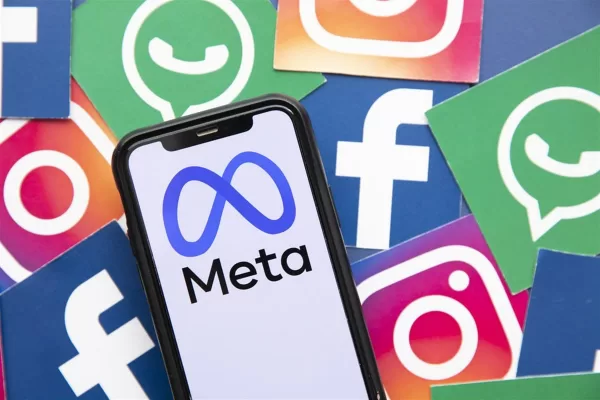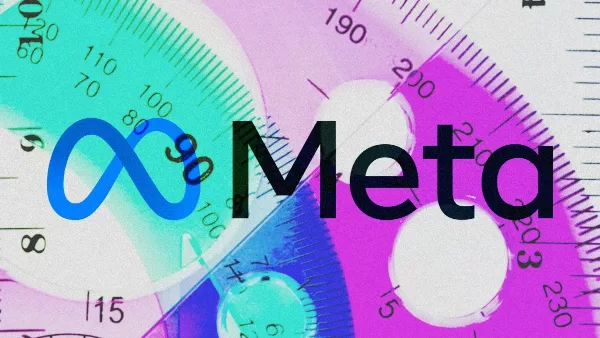Insights
How Much To Spend On Facebook Ads Without Wasting Budget?
On Digitals
10/11/2025
28
To answer how much to spend on Facebook Ads, let’s start with Meta’s latest report showing that the average ad cost rose by nearly 10% in Q2 2025, particularly across competitive sectors such as E-Commerce and Education. Alongside this, the surge of short-form videos and Reels is reshaping how brands plan and distribute their ad budgets.
In response, On Digitals presents this guide to help you develop a smart Facebook ads budget strategy, optimizing your costs, improving ROI, and maximizing performance across campaigns.
What Is A Facebook Ads Budget?
A Facebook ad budget is the total amount marketers allocate to show their ads based on campaign goals. It effectively manages spend across campaigns or ad groups, giving advertisers control over where and how their money is used.
How Budgets Work
When learning how much to spend on Facebook Ads, the first step is understanding how budgets function. Facebook allows you to set your Facebook ads budget strategy at two levels: the campaign budget and the ad group budget. Knowing how each works helps you spend more wisely and gain the best results for every dollar invested.

Two levels of Facebook Ads budget strategy
Campaign Budget
This setup lets marketers assign a total budget for the entire campaign, while Facebook automatically distributes spending among the highest-performing ad sets. It’s ideal for those who want Facebook to automatically optimize how much to spend on Facebook Ads using performance data.
Advantages: Simple management, time-saving, and AI-driven budget allocation.
Ad Group Budget
With an ad group budget, you can set individual budgets for each ad set, controlling exactly how much to spend on Facebook Ads by audience, region, or creative type. This approach suits A/B testing phases and helps identify which audiences deliver the strongest ROAS.
Advantages: Greater precision, improved optimization, and easier performance comparison.
Both campaign and ad group budgets can be applied depending on your scale, objectives, and available data.
To determine more accurately how much to spend on Facebook Ads, it’s essential to understand the factors that affect Facebook ad spend, let’s explore these in the next section.
Factors That Affect Facebook Ad Spent
According to Meta’s Q2 2025 report, the average Facebook ad cost increased by 9% year-over-year, signaling higher competition and shifting consumer behavior. To truly understand how much to spend on Facebook Ads and build an effective Facebook ads budget strategy, you first need to recognize the key factors that drive these cost fluctuations.
Competition Across Meta Platforms
With Meta’s ecosystem, including Facebook, Instagram, and Reels, becoming increasingly crowded, advertisers are now bidding against a larger pool of brands. As more marketers compete for the same audiences, CPC (Cost per Click) and CPM (Cost per 1,000 impressions) naturally rise, influencing your overall Facebook ad budget strategy.

Rising CPC on Meta platforms impacts budgets
The more competitive your niche, the more carefully you’ll need to adjust how much to spend on Facebook Ads to maintain visibility and sustain performance.
Target Audience Optimization
Poorly defined or overly broad targeting often leads to wasted spend. By refining your target audience through lookalike segments, interest layers, and conversion data, you can reduce unnecessary impressions and lower ad costs.
Smart audience optimization helps advertisers determine how much to spend on Facebook Ads for each stage of the funnel (awareness, consideration, conversion).
The Rise of Short-Form Video
The dominance of short-form video content, especially through Reels and TikTok, has completely changed how users consume media. Audiences are now drawn to fast, dynamic visuals that deliver value within seconds. As a result, video ads have become the top-performing format on Meta platforms, offering better engagement and retention.
However, this shift also brings higher production demands and stronger competition. Brands must now invest in creative testing, captions, and storytelling within limited seconds to stand out. Understanding these changes helps marketers plan how much to spend on Facebook Ads to balance creative quality and cost efficiency.
Changes in Meta’s Algorithm
Meta continuously improves its machine learning and ad delivery algorithm, emphasizing ad relevance, creative performance, and user engagement. Campaigns that generate high-quality interactions tend to be rewarded with lower CPM and CPC, while those with poor engagement signals face higher costs per result.

Ad relevance now key under Meta’s new algorithm
To better manage how much to spend on Facebook Ads, marketers need to adapt quickly to these algorithm updates. Regular testing of ad formats, optimizing creative for relevance, and maintaining consistent engagement help maintain performance and stabilize ad spending over time.
Seasonality and Economic Shifts
Advertising costs on Meta platforms fluctuate significantly due to seasonal demand and global economic trends. Periods like Black Friday, Christmas, and back-to-school seasons see increased competition, pushing CPMs and CPCs higher across all industries.
Economic shifts such as inflation or reduced consumer spending can also affect performance and budget allocation. By forecasting these patterns early, businesses can better plan how much to spend on Facebook Ads, adjusting bids and budgets strategically during high-cost seasons.
Understanding these factors is essential for any marketer aiming to create an efficient ad strategy in 2025. From competition and targeting precision to algorithm shifts and seasonal fluctuations, every element directly influences campaign cost and performance.
How Much to Spend on Facebook Ads?
The biggest challenge in answering how much to spend on Facebook Ads lies not in finding a fixed number, but in learning how to spend efficiently while maximizing campaign performance. To help you make smarter decisions, here are four key strategies to optimize your ad budget and ROI on Meta platforms.
Define Your Target Audience Accurately
Knowing exactly who you want to reach is the first step toward spending effectively. A clearly defined target audience helps Facebook’s algorithm deliver ads to users most likely to convert, reducing wasted impressions and improving ROI. By refining your targeting, you ensure every dollar contributes to meaningful engagement and conversions.

Reach the right audience, spend more efficiently
When planning how much to spend on Facebook Ads, use advanced audience filters such as interests, behaviors, and demographics. Combine them with lookalike audiences or retargeting lists to enhance precision and allocate your Facebook ad budget toward segments that deliver the highest value for your campaign goals.
Retargeting to Maximize ROI
Retargeting remains one of the most powerful ways to boost ROI on Facebook Ads. It allows you to reach people who have already interacted with your brand, visited your website, added items to their cart, or engaged with previous posts. These users are much more likely to convert, making your ad spend more efficient.
By including retargeting in your strategy, you can better control how much to spend on Facebook Ads. Allocate a portion of your budget specifically for retargeting warm leads, and use dynamic product ads or personalized messaging to turn interest into conversions.
Invest in High-Quality Ad Creatives
Ad creatives including visuals, headlines, and copy, play a crucial role in how users engage with your campaign. High-quality content not only captures attention but also boosts click-through and conversion rates, helping you get more from your Facebook ad budget strategy while lowering overall costs per result.
When evaluating how much to spend on Facebook Ads, allocate sufficient resources to creative production and testing. Run A/B tests on visuals, formats, and CTAs to identify what resonates best with your audience. The more engaging your content, the more efficiently your budget turns into measurable conversions.
Leverage Multi-Channel Marketing
Don’t rely solely on Facebook for traffic and conversions. Integrate your campaigns with other Meta platforms such as Instagram, Messenger, and Reels, or even external channels like Google Ads and email marketing. This approach strengthens your overall Facebook ads budget strategy, enhancing reach and stability across multiple platforms.
A well-executed multi-channel strategy not only increases brand visibility but also reduces dependency on a single traffic source. By diversifying your efforts, you can optimize ad spend, maintain consistent growth, and better understand how each channel contributes to your conversion funnel.

Expand reach beyond Facebook for better results
Knowing how much to spend on Facebook ads becomes easier when you view it as part of a broader marketing ecosystem. By diversifying your spend, you can balance costs, capture audiences at different stages of the funnel, and maintain consistent growth even when Facebook ad prices fluctuate.
Common Budget Mistakes to Avoid
Even when you know how much to spend on Facebook Ads, poor budget management can easily waste your ad dollars. Below are the most common mistakes advertisers make, and how to avoid them:
- Setting a budget without clear goals: Many marketers decide their budget arbitrarily without defining KPIs like CPA, ROAS, or conversions. Always align your ad spend with measurable business objectives to ensure every dollar contributes to performance.
- Underfunding conversion campaigns: Trying to minimize costs by allocating too little to conversion-focused campaigns limits Facebook’s ability to exit the learning phase. Ensure your daily budget is at least 50× your target CPA for stable optimization.
- Ignoring audience segmentation: Running all ads under one broad audience makes it difficult to track what works. Split your campaigns by intent, demographics, or funnel stage to better evaluate how much to spend on Facebook Ads per segment.
- Not testing enough creatives: If you use the same ad design for months leads to ad fatigue and higher CPM. Regularly A/B test visuals, copy, and CTAs to identify which combination gives the best ROI before scaling your budget.

A/B testing keeps your Facebook ads fresh
- Failing to adjust budgets based on data: Setting a “set-it-and-forget-it” budget is one of the biggest mistakes. Review performance weekly and reallocate funds to high-performing campaigns. This helps you optimize how much to spend on Facebook Ads dynamically over time.
- Over-relying on one campaign type: Relying solely on conversions or traffic campaigns can limit your reach. Diversify your ad objectives (awareness, engagement, remarketing) to balance performance and cost efficiency.
- Ignoring seasonality and timing: Many advertisers overlook seasonal trends or high-competition periods like Q4 holidays. Plan your spending calendar ahead to ensure cost control and prevent overspending when CPM spikes.
Avoiding these common mistakes helps you spend more strategically and make every dollar count. When you refine your targeting, test creatives consistently, and allocate budget based on real performance data, your campaigns become more predictable and scalable.
FAQs: How Much to Spend on Facebook Ads 2025
How much should small businesses spend on Facebook Ads?
For small businesses, it’s best to start with $10–$30 per day while testing audiences and creatives. As you gather data, scale gradually to determine how much to spend on Facebook Ads that deliver the best ROI for your niche.
Is there a minimum budget to run Facebook Ads effectively?
Yes. While you can technically run ads with as little as $1 per day, Facebook’s learning phase works best with higher budgets. Allocate enough to reach 50+ conversions weekly to help the algorithm learn and optimize how much to spend on Facebook Ads efficiently.
How does ad frequency affect Facebook ad costs?
High ad frequency often leads to audience fatigue, users stop engaging, and costs per result increase. Refreshing your creatives regularly can stabilize performance and control how much to spend on Facebook Ads over time.
Should I increase my budget during seasonal campaigns?
Yes, but strategically. During peak periods like holidays or sales events, CPMs can spike significantly. Plan ahead by adjusting your Facebook ads budget strategy early, ensuring that you maintain visibility without overspending.
What’s the best way to track ROI from Facebook Ads?
Use Facebook Ads Manager alongside tools like Google Analytics to monitor conversions, ROAS, and cost per action. Tracking these metrics helps you evaluate how much to spend on Facebook Ads and which campaigns generate the highest return.
Making Every Money Count With On Digitals
Understanding how much to spend on Facebook Ads isn’t just about setting a number, it’s about knowing how to allocate, test, and optimize your budget for maximum ROI. From identifying key cost factors to choosing the right bidding strategy and avoiding common mistakes, smart budgeting ensures your campaigns perform efficiently and scale sustainably in 2025.

Smarter ad budgeting starts here with On Digitals
At On Digitals, we help brands turn data into strategy, from building precise audience targeting to crafting performance-driven ad plans. Our team is ready to guide you in creating a Facebook Ads budget that saves cost, boosts engagement, and drives measurable growth across every campaign.
NEWEST POSTS
- Micro Influencer Marketing For Better Reach And Stronger Engagement
- How to Build Topical Authority SEO for Stronger Rankings and Trust Online
- AI Overviews SEO – Guide To Its Impacts On Search Visibility!
- AI Video Marketing: Definition And How It Works In Detail!
- AI For Market Research: Revolutionizing The Digital Age In 2025!
Read more
